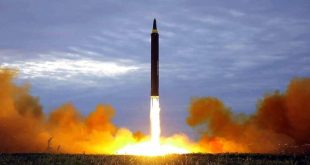Beijing. A few days before the G-20 summit to be held in New Delhi, China on Monday officially released the 2023 edition of its ‘standard map’ (China New Map), in which Arunachal Pradesh, (Arunachal Pradesh) Aksai Chin area, Taiwan and thdisputed The South China Sea has been shown as part of a communist country. Through this map, China intends to strengthen its claims on these areas. While India has repeatedly said that Arunachal Pradesh is its integral part and will always be so. China’s official newspaper Global Times has shared the 2023 standard map of China on X (earlier Twitter).
The Global Times said that it was released on the website of the Standard Map Service owned by China’s Ministry of Natural Resources. Which claims that this map has been made on the basis of drawing the national boundaries of China and different countries of the world. Less than a week after Prime Minister Narendra Modi and Chinese leader Xi Jinping met each other on the sidelines of the BRICS summit in Johannesburg, Beijing launched the new map, dubbed the ‘Standard Map’. In which some parts of India were wrongly shown as Chinese territories.
China’s move before the G-20 summit
This map has been released just before the possible visit of Chinese President Xi Jinping to India at the G-20 summit in New Delhi. In this, the world-famous 9-dash line for China’s border claims has been shown again. The 9-dash line was drawn on a map by a Chinese geographer in the 1940s. It is a U-shaped line that claims 90 percent of the South China Sea, which the Philippines calls the North Philippines Sea. This move of China is against international laws, especially the United Nations Convention on the Law of the Sea.
China does such things continuously
China has always been indirectly asserting its authority over Arunachal Pradesh. India has been protesting against the visit of any politician in Arunachal. In the same year, China changed the names of 11 places of Arunachal Pradesh in its map. After this, while giving a blunt answer to China on behalf of the Indian Ministry of External Affairs, it was made clear that we reject it outright. Arunachal Pradesh is and will remain an integral part of India. This kind of effort will not change the reality. However, there is also a big question regarding the timing of the new map. The attitude of showing aggression through the map reflects the expansionist campaign of the Chinese Communist Party since 1949, which shows India’s Arunachal Pradesh state and parts of Ladakh inside China’s map.
 Indian Thought Latest News & Views
Indian Thought Latest News & Views



